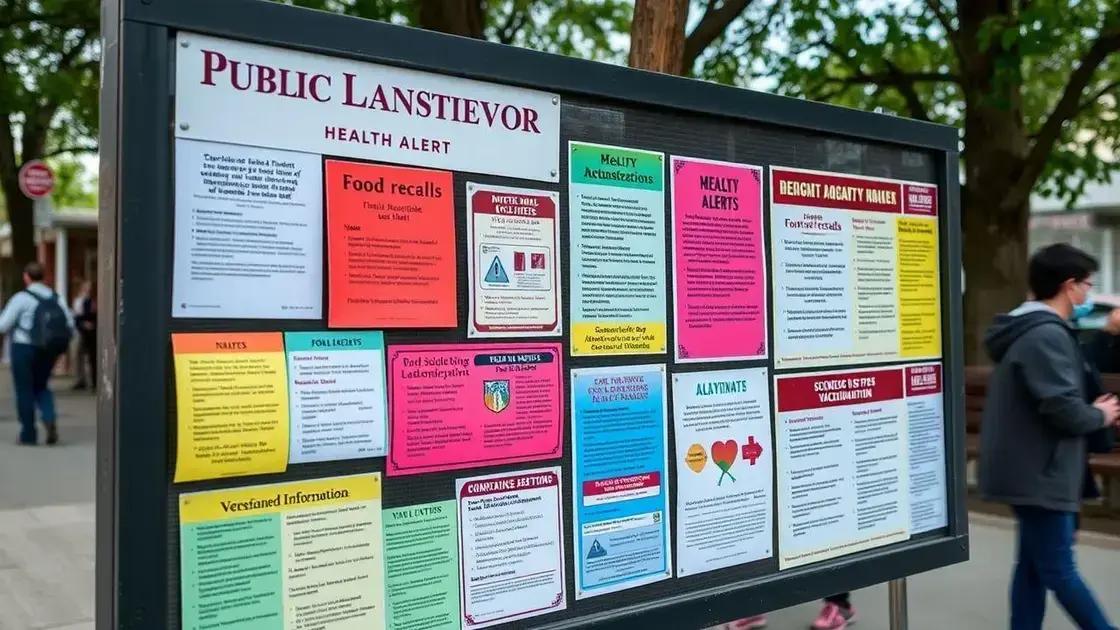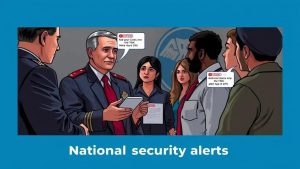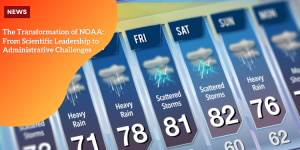Public health advisories: are you paying attention?

Public health advisories are critical communications from health authorities that inform the public about health risks and provide essential guidelines to protect community health effectively.
Public health advisories play a crucial role in keeping communities safe. Have you ever wondered how these updates affect your daily life? Let’s dive into what you need to know.
Understanding public health advisories
Understanding public health advisories is essential for everyone. These advisories help us stay informed about health risks and how to protect ourselves. They can cover various topics, such as disease outbreaks, environmental hazards, or health behavior recommendations.
What Are Public Health Advisories?
Public health advisories are communications from health authorities aimed at informing the public about potential health risks. These advisories often provide guidelines and recommendations to help mitigate those risks. Staying updated is crucial to ensure your safety and well-being.
Key Components of Public Health Advisories
- Clear information about the health issue
- Recommended actions for individuals and communities
- Updates on the situation as it develops
In many cases, public health advisories arise from data collected by health agencies. For example, during an outbreak, officials will post advisories to inform people about the symptoms and preventive measures. This proactive communication plays a vital role in reducing infections and protecting the community.
Another aspect of understanding public health advisories is knowing how to interpret them. Sometimes, they may seem alarming, but it’s important to look for actionable information. Following the guidelines can make a significant difference in keeping yourself and others safe.
Where to Find Reliable Public Health Advisories
You can find public health advisories on official health department websites, government portals, and public health organizations. These sources provide trustworthy updates. It’s best to avoid social media for health updates, as they can sometimes spread misinformation.
In summary, understanding public health advisories equips you to make informed decisions. By staying informed and following guidelines, you contribute to a healthier community for everyone.
The importance of timely communication

The importance of timely communication cannot be overstated, especially in public health contexts. Quick and clear updates help people understand risks and take necessary actions. When health advisories are communicated promptly, communities can respond effectively and mitigate dangers.
Why Timely Communication Matters
Understanding how to communicate information quickly is crucial. Delayed notifications can lead to confusion and panic, whereas timely updates create a sense of calm. For instance, during a disease outbreak, rapid communications allow individuals to take precautions to protect themselves and their families.
Elements of Effective Communication
- Clarity of the message
- Consistency in updates
- Accessibility of information
When public health officials communicate, they must prioritize clarity. Simple language ensures everyone understands the message. Consistent updates prevent misinformation from spreading and help maintain public trust. Additionally, accessible information, whether through websites or community bulletins, ensures everyone can receive important health advisories.
Moreover, timely communication encourages community engagement. When people feel informed, they are more likely to adhere to guidelines. They also become proactive, sharing information within their networks. This level of interaction amplifies the impact of public health messages, creating a healthier environment for all.
Examples of Successful Timely Communication
Consider public health campaigns during flu seasons or pandemics. When health departments issue advisories promptly, individuals are more likely to get vaccinated and follow health protocols. This collective effort results in fewer cases and a stronger community response.
In summary, timely communication is a cornerstone of effective public health strategies. It empowers individuals to make informed decisions, reduces anxiety, and fosters a cooperative environment focused on health and safety.
How to access reliable health information
How to access reliable health information is crucial for making informed decisions about your health. With so much information available online, it’s essential to know where to find trustworthy sources.
Identify Trusted Sources
Reliable health information typically comes from government websites, medical organizations, and peer-reviewed journals. For example, the Centers for Disease Control and Prevention (CDC) and the World Health Organization (WHO) provide up-to-date data on public health issues.
Evaluate the Information
- Check the author’s credentials
- Look for citations and references
- Assess the date of publication
Evaluating health information is just as important as the source. Always verify who wrote the content and their qualifications. Reliable articles should contain references to scientific studies or expert opinions. Ensure that the information is current by checking the publication date.
In addition, be cautious of sensationalized headlines or unverified claims. It’s easy to find misleading information, especially on social media. Always cross-check facts using multiple sources before accepting anything as true. This practice helps you avoid unnecessary panic and misinformation.
Use Health Apps and Platforms
Another way to access reliable health information is through health apps and platforms. Many reputable organizations offer apps that provide evidence-based information. These apps can help you track your health, receive updates on health advisories, and find local resources.
Ultimately, knowing how to access reliable health information empowers you to take control of your health. By using trusted resources and critically assessing the information, you can stay informed and make better health choices.
Common public health advisories to watch for

Common public health advisories to watch for provide crucial information that can affect your health and safety. Being aware of these advisories helps you stay informed and prepared.
Types of Public Health Advisories
Public health advisories often cover various health concerns. For instance, they may alert you to outbreaks of contagious diseases, environmental hazards, or food safety issues. Understanding these types can help you react appropriately.
Health Advisories to Monitor
- Outbreaks of diseases
- Water contamination warnings
- Food recalls
- Vaccination updates
Outbreak advisories inform you about diseases like influenza or COVID-19 that may be spreading in your area. Water contamination warnings indicate that the water supply may pose health risks, urging you to avoid consumption. Food recalls alert consumers to unsafe products, so checking these advisories is essential for your family’s safety. Additionally, vaccination updates may inform you about new vaccines available or booster shot recommendations.
Health advisories can also include alerts about natural disasters, such as hurricanes or wildfires. Knowing the risks and how to prepare can protect you and your loved ones during such events.
Where to Find Public Health Advisories
You can access public health advisories through official government websites, local health departments, and social media feeds from reputable health organizations. Checking these sources regularly ensures you receive timely updates.
Staying aware of common public health advisories is essential for maintaining your health. By following these updates, you can make informed decisions and protect your well-being and that of your community.
The role of local health departments
The role of local health departments is vital in protecting community health. These departments are responsible for monitoring health trends and ensuring access to health services.
Functions of Local Health Departments
Local health departments carry out several key functions. They monitor disease outbreaks, provide education to the public, and promote vaccination programs. They also respond to health emergencies, ensuring that the community is prepared.
Community Engagement
- Organizing health fairs
- Conducting educational workshops
- Offering resources for healthy living
Engaging with the community is another important role of local health departments. They organize health fairs to promote wellness and encourage healthy behaviors. By conducting educational workshops on topics like nutrition and exercise, they help people make informed choices. These departments also provide resources to ensure that everyone can access healthy living options.
In addition to these functions, local health departments often collaborate with other organizations. They work with schools, businesses, and non-profits to create a healthier environment. This partnership strengthens community health efforts.
Accessing Services
Residents can access various services through their local health department, such as immunizations, health screenings, and family planning services. These departments often provide valuable health resources tailored to the community’s needs. By being aware of these services, individuals can take advantage of the support available.
Overall, the work of local health departments is essential in promoting public health. They act as the first line of defense against health threats and strive to ensure every community member’s well-being.
Responding effectively to health advisories

Responding effectively to health advisories is crucial to protecting yourself and your community. When health advisories are issued, knowing how to act can make a significant difference.
Understanding the Advisory
When a health advisory is released, it’s important to carefully read and understand its content. It may contain vital information about disease outbreaks, environmental hazards, or food safety. Take your time to grasp the key points and recommendations provided.
Steps to Take
- Follow recommendations issued by health officials
- Stay updated with reliable news sources
- Share information with others
Once you understand the advisory, follow the recommended actions. These instructions may include getting vaccinated, practicing social distancing, or avoiding certain areas. Staying updated through reliable news sources helps you track the situation and any changes. Remember, sharing information with friends and family helps them stay safe too, creating a more informed community.
Preparing for Possible Changes
Health advisories can change quickly, so it’s essential to remain adaptable. Be prepared for new guidelines or recommendations as situations evolve. This might mean stockpiling essential supplies at home, planning for potential school closures, or adjusting your daily routine.
Additionally, being proactive during health advisories is crucial. This can involve practicing good hygiene, keeping an emergency kit ready, and maintaining communication with local health departments. Taking these steps ensures you remain informed and prepared during challenging times. Ultimately, responding effectively to health advisories leads to better health outcomes for you and your community.
FAQ – Frequently Asked Questions About Public Health Advisories
What are public health advisories?
Public health advisories are official communications that inform the public about health risks and provide recommendations to mitigate those risks.
How can I stay informed about health advisories?
You can stay informed by checking reliable sources such as local health department websites, government health agencies, and trusted news outlets.
What should I do when I receive a health advisory?
Read the advisory carefully, understand the recommendations, and follow the guidelines provided to protect your health and that of your community.
Why are local health departments important during health advisories?
Local health departments play a crucial role in monitoring health trends, providing education, and coordinating responses to public health emergencies.






